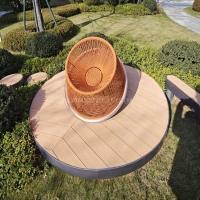Welcome to the website for landscape facilities products and knowledge.
How does the bin’s design ensure compatibility with waste efficiency benchmarks?
The design of waste bins plays a pivotal role in ensuring compatibility with waste efficiency benchmarks, which are critical for sustainable waste management. Modern bins are engineered with features like optimized capacity, segregated compartments, and user-friendly mechanisms to maximize waste sorting and recycling efficiency.
For instance, color-coded lids and labeled sections help users easily distinguish between recyclables, organic waste, and general trash, aligning with global waste segregation standards. Additionally, sensor-based lids or foot pedals reduce contamination by minimizing direct contact, further improving waste quality for processing.
Material choice also matters—durable, lightweight, and recyclable materials like HDPE or stainless steel ensure longevity while reducing environmental impact. Smart bins equipped with IoT sensors can even track fill levels, optimizing collection routes and reducing operational costs.
By integrating these design elements, waste bins not only meet but often exceed efficiency benchmarks, fostering a circular economy and reducing landfill dependency.
Related search:

Recommendation
Swivel chair-Specialty steel structure woven rattan leisure chair with rotatable design